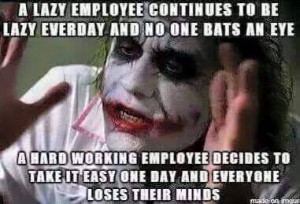How retailers use the data that we as employees help to gather.
9 Unexpected Ways Retailers Are Using Your Data

Fact: retailers are using your data. Most of us know it and are okay with it. We may plunk down our email address to receive updates from our favorites designers, or offer our birthdays in hopes of scoring a timely gift. And it’s a win-win, so why not? For retailers, this means higher engagement and conversion rates. As consumers, we benefit from more relevant, personalized and convenient information – if we are willing to forego a little bit of privacy to get it. But the byte doesn’t stop there.
“Regardless of what information a customer may volunteer, retailers can gather a wealth of data simply from registered users,” says Elizabeth Canon, founder of Fashion’s Collective, a digital marketing consultancy. That includes on-site behavior (for example, what products you view), user demographics (age, gender and location) and purchase history. Using big data analytics tools, retailers then apply algorithms that help them predict with high accuracy a customer’s future behavior on an individual level.
Based on those predictions, retailers decide to “invest” more or less in you – it’s a bit like customer gambling. For someone who matches the profile of a potential big spender, the retailer may send offers, catalogues, free samples or even assign preferential treatment in the call center.
So what exactly are retailers looking at? According to AgilOne, a big data marketing firm that works with Rebecca Minkoff and Ideeli, here are nine factors pulling weight in retailer-customer relationships:
1. Buying for yourself. Based on the types of items you buy and addresses you use, retailers can tell if you’re buying for yourself or for others. Why do they care? People who are gifting tend to be less loyal customers, so retailers invest less in them. Not everyone loves a giver.
2. You “look like” someone they know. Retailers are obsessed with super consumers, which are defined as those that spend 2.5x more than the average. By using something called “Facebook lookalike audiences,” retailers can find people that share characteristics with their super consumers and advertise directly to them. Yeah, even retailers have a type.
3. You’re playing the field. Retailers think about “share of wallet,” or the amount of your total spending that they’re getting. If you’re spending a lot less than others like you, then you’re likely taking some of your money elsewhere. Growing wallet share can be easier than finding new customers, so if retailers suspect you’re shopping with their competitors they may double down on you with special incentives.
4. You’ve used the magic words. You may have used search terms to get to a retailer’s site via Google, or searched within a retailer’s own site. The retailer is keeping track. By knowing which keywords correlate to higher spends, retailers can target customers that may be ready to splurge. Rule of thumb: customers looking for specific brands (i.e., “Marc Jacobs”) tend to be more valuable than those doing a generic product search (i.e., “ankle boots”).
5. You’ve spied storm clouds coming (or a heatwave or blizzard). Retailers are very interested in the relationship between weather and purchases because it’s one strong, real-time indicator of what you might be thinking and therefore apt to buy. If a storm is coming in, for example, you might receive promos for cozy knits or rain gear. It’s one instance in which waiting until you already need an umbrella/gloves/galoshes may actually pay off.
6. You’re in the honeymoon period. A big goal for retailers is turning a one-time buyer into a repeat customer. One helper there: the repeat purchase window, a “honeymoon” period of sorts – typically 14 to 30 days – in which the first-time buyer is more likely come back for more. If you’re within this window, you’re primed to receive follow-up marketing.
7. You just upgraded. We’re not the only ones sizing up potential matches based on their hardware. While they can’t spy what’s parked in your garage, retailers can tell the type of device you’re using – and are paying attention. If it’s one with a high retail value or a tablet – considered a luxury device – they might give you extra attention.
8. You’re thinking about breaking up with them. Retailers are good at reading the cards. If you’re not opening their emails anymore or haven’t been to their site in a while they might up their game by sending you a deal – the retail equivalent of a dozen roses – or minimize opt-out risk – the “break up” – by sending you fewer emails.
9. You might be using them. As with dating, not all customer matches are meant to be. Retailers look for customers who might be abusing return policies (uh oh, does that sound familiar?) and stop marketing to them. Still, many prefer that you “game the system” with them rather than their competitors. But if a customer becomes unprofitable, then you might see less generous offers in the future. This relationship really is just a number’s game.

























Recent Comments